It’s New York Fashion Week — while many people have their eyes on the runway, street protests are giving glamorous fashion shows some serious competition. And where fashion is concerned, protest and dissent are never far away.
For many years, the use of certain colors, garments, and accessories has been a striking trend across pro-democracy movements. This is owing to many reasons, one of which is that what we wear is an immediate way of self-expression, and within the context of protests, it’s a way of public participation and taking a stand against the status quo. Below, we discuss what sartorial decisions represent in select pro-democracy movements, and shared colors chosen as symbols of unity and protest.
Red
In color psychology, red is the color considered to provoke the strongest emotions, ranging from passion to power, sacrifice, vigor, and anger. It’s a color that is difficult to miss, and because of its stimulating properties, it is often used to call for attention. In connection with a spectrum of political ideologies globally, red is also the most featured color in national flags around the world.
Burma
Shades of red have been associated with Burma’s democracy movement since the Saffron Revolution in 2007, when thousands of maroon-clad Buddhist monks joined in a massive uprising against the country’s military regime. Today, two weeks after a coup, a swelling protest movement has also adopted red to mark its stance against the country’s backslide into military dictatorship.
After a decade-long experiment in democracy, Burma’s military seized back control from the civilian government on February 1, 2021, and declared a year-long state of emergency. Previously, the country had been ruled by the military junta from 1962 until 2011. In the 2010 general election, a civilian government was created, but the military retained significant control of all political decisions.
The 2021 coup d’état took place four months after the re-election of Aung San Suu Kyi’s National League for Democracy (NLD) party. Aung San Suu Kyi — known for leading the democratic transition in the country, but also for her defense and denial of the military’s ethnic cleansing of the Rohingya before the International Court of Justice (ICJ) — is now under house arrest, and an unknown number of her fellow party members are detained.
In the days following the coup, a leaderless red ribbon campaign gained momentum among teachers, students, doctors, and growing ranks of civil servants who striked against the military coup. Demonstrators donned red ribbons and carried red flowers as symbols of resistance to the army takeover.
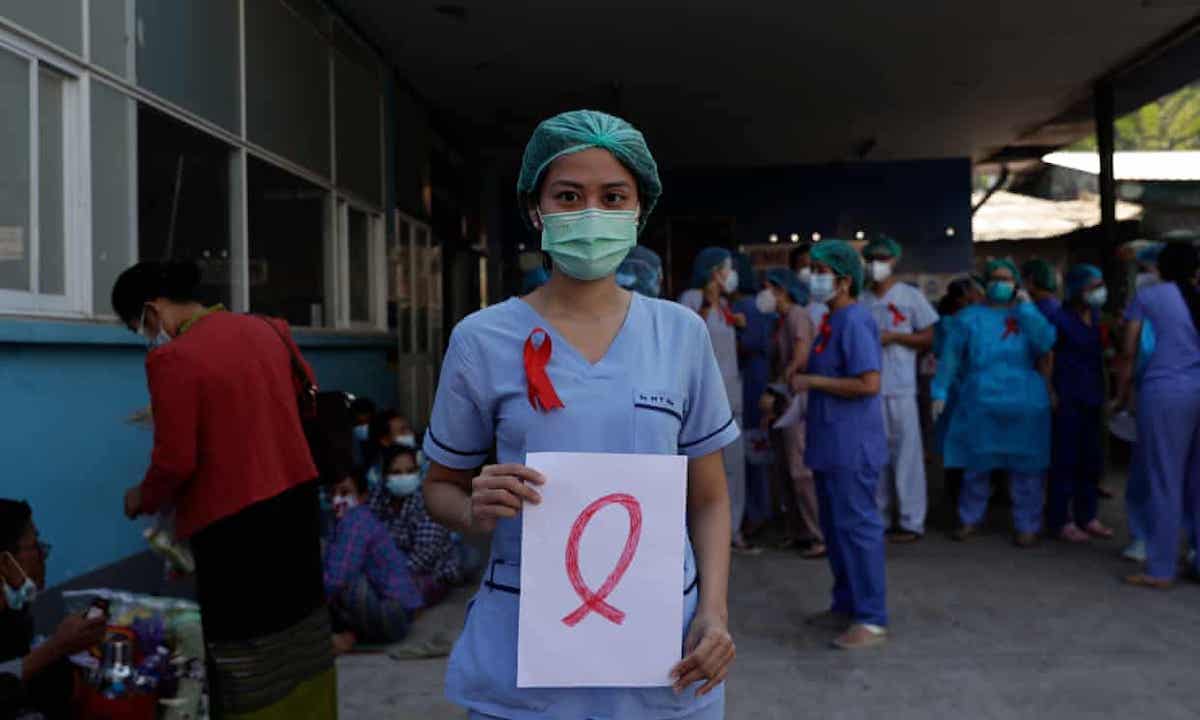
Credit: Lynn Bo Bo/EPA (The Guardian)
As anger and frustration have grown, the protest movement has mounted into larger demonstrations, and protest crowds have only grown bigger and bolder ever since. Residents in the capital have been honking car horns, banging on pots and pans, and waving red flags across the streets to show their opposition to the authoritarian rule of the military regime. Households display red stickers in their windows. And ubiquitous among the protesters is the red ribbon pinned to clothes.
The infamous three-finger salute from The Hunger Games, a symbol that was visible in the Thailand pro-democracy protests, was also gestured amongst Burmese protesters, many of whom wore red.
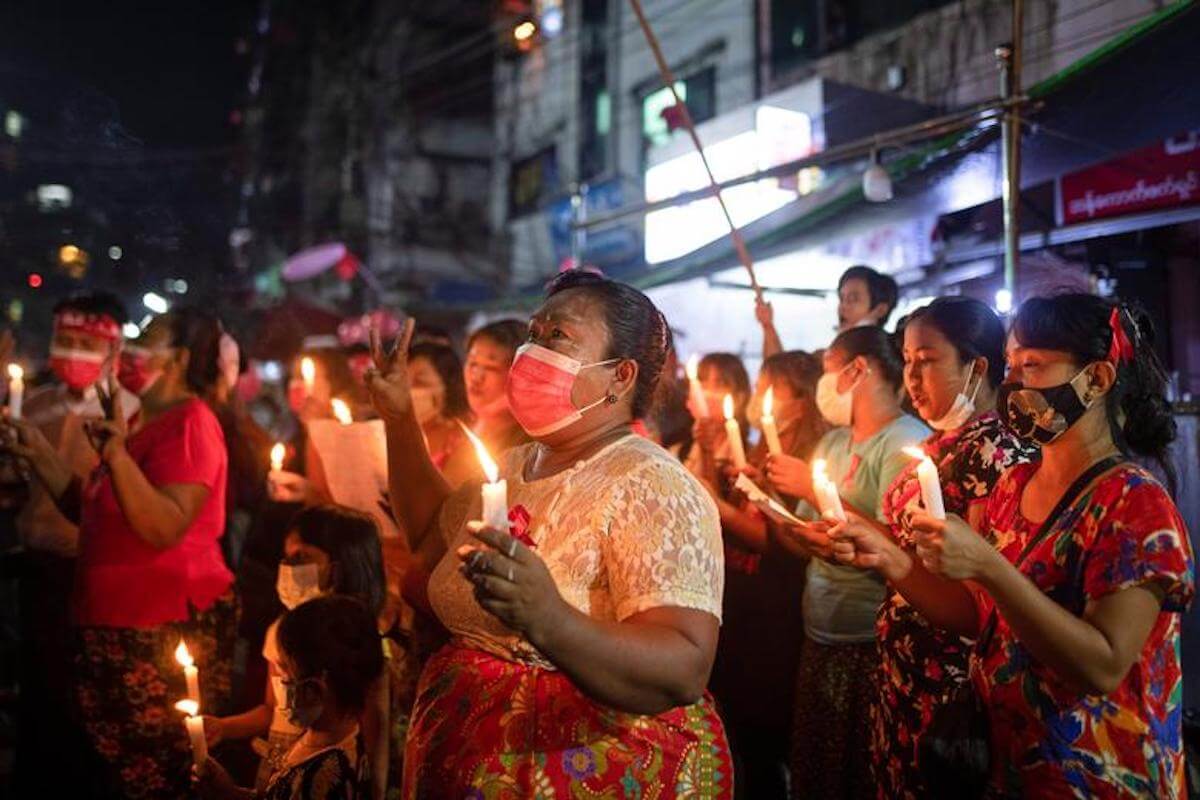
Credit: Reuters
Uganda
Pop star-turned-politician and founder of the grassroots People Power movement, Robert Kyagulanyi — popularly known as Bobi Wine — ran for president against authoritarian ruler Yoweri Museveni in January 2021. Wine had initially amassed popularity among the youth with his songs critical of Museveni. When he went into politics in 2017, the support of young constituents under 35, who comprise nearly 80% of the population, allowed him to secure a seat in the parliament.
Wine’s tactical use of music is accompanied by his fashion choices. His trademark red beret, which has become synonymous with the People Power movement and the spirit of Ugandan opposition, was effectively outlawed by the government in 2019. Civilians wearing or possessing it would face prosecution under military law and can face a punishment of life imprisonment. In response, Wine publicly denounced the government’s move, and the youth of Uganda rejected it.

Credit: Bobi Wine/African Arguments
The red beret has been a target of state repression, not only because it symbolizes support for Wine, but also a “desire for change.” Uganda has never had a peaceful transition of power since its independence in 1962. Museveni has ruled the East African country for more than three decades, and amid allegations of vote-rigging, he declared victory in Uganda’s most recent election in January for a sixth term in office. Wine has since asked the supreme court to nullify his opponent’s tainted victory.
White
The color white is associated with peace and purity, and has been an emblem of pro-democracy movements since the suffrage movement. Historically more accessible than dyed textiles, white garments could also be captured with black and white photography in the traditional media, i.e. newspapers. With its lingering symbolism, white clothing has been adopted as a tool of female political resistance, prevailing in pro-democracy movements in Iran and Cuba in the recent past.
Iran
In 2014, Iranian journalist, activist, and former Oslo Freedom Forum speaker Masih Alinejad spearheaded the My Stealthy Freedom online movement to oppose Iran’s compulsory veiling for women and girls. The dress code is the result of a strict interpretation of “covering” in Islam, and many Iranian women see compulsory hijab as a political symbol of oppression, forced upon them by the regime in Iran.
Bolstered by the re-election of President Hassan Rouhani in 2017, the White Wednesdays social media campaign took the online movement onto the streets in cities throughout Iran by using the hashtag #whitewednesdays, and inviting women to wear white headscarves or other white clothing, or to remove their hijab on Wednesdays, and to send images or videos of themselves to be shared on social media — at great personal risk. Failing to wear a headscarf in public is an offense punishable by up to two months in prison and a hefty fine.
Nonetheless, the courageous act of civil disobedience went viral thereafter, and every Wednesday, women walked the streets of Iran, stood on elevated utility boxes, and took off their veils, defiantly waving them on the end of a stick as flags of freedom. Alinejad takes no credit for her leading role in Iranian women’s emancipation, but says she’s simply providing women with a platform that gives them the power to be loud, to find one another, and to realize they are not alone.
In response to the nonviolent protests, the authoritarian regime escalated its crackdown on women’s rights, persecuting those who dared speak out against the compulsory public hijab law. Scores of women were arrested for wearing white headscarves or pieces of white clothing as symbols of protest. One protester, Shaparak Shajarizadeh, said she had been punished for “waving a white flag of peace in the street.”
My Stealthy Freedom juxtaposes the color white against the forces of black reaction. Since its launch, the movement has successfully ignited a debate on women’s fundamental rights, and today, more Iranian women are defying the fear and repression instilled in them by the regime.
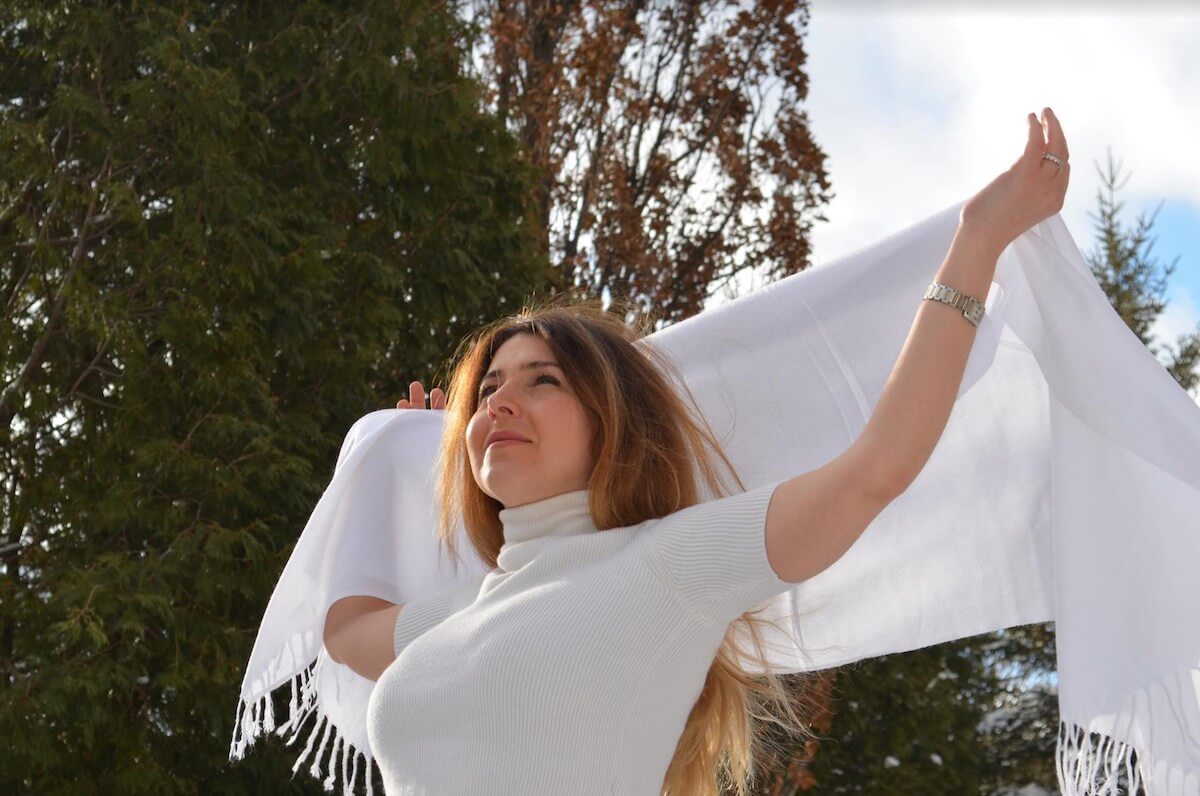
Credit: Shaparak Shajarizadeh/Twitter
Cuba
For six decades, Cuba has been ruled by a dictatorship that has committed human rights abuses such as arbitrarily detaining its people, silencing journalists, censoring information, and limiting fundamental freedoms of expression, association, and assembly. Dissidents on the island are seen as a threat to the regime, and anyone who dares speak up is at risk of unjust imprisonment due to the lack of independence of the judiciary. There is no means of accountability available to victims when their freedom of expression is violated.
In 2003, the regime led a crackdown on dissidents during which authorities arrested 75 protesters, including journalists and human rights activists, under the accusations of criticizing the government and receiving support from American funds. The deplorable event, known as Cuba’s Black Spring, led to formation of the Ladies In White (Damas de Blanco) opposition movement. A group of wives and other female relatives of the 75 jailed dissidents silently marched the streets every Sunday wearing white clothing symbolizing peace, holding photos of their family members and the number of years they were sentenced to.

Credit: Franklin Reyes/AP
Throughout the years, the opposition movement has been attacked by mobs and members were routinely detained by police enforcement. And despite the fact that all 75 political prisoners are now free, the Ladies in White have continued to hold demonstrations every Sunday against the abuses committed by the Cuban regime.
The attire of the Ladies in White signals the peace taken away from their families, and the resilience and power that raising their voices against the regime has given them. The last two Black Spring prisoners were released in 2011, but Cubans’ struggle for justice, democracy, and freedom for all dissidents, journalists, and activists who are still imprisoned has not rested.
For years, the Ladies in White marched the streets to demand the release of all imprisoned dissidents, defying a corrupt system that punishes anyone who opposes the regime. White is often associated with peace, but it also reflects hope and simplicity. The simple act of marching wearing white garments symbolizes years of struggle, thousands of days demanding justice, and the strength of hundreds of women, and has been a source of hope for all those victimized by Cuba’s shameful justice system.
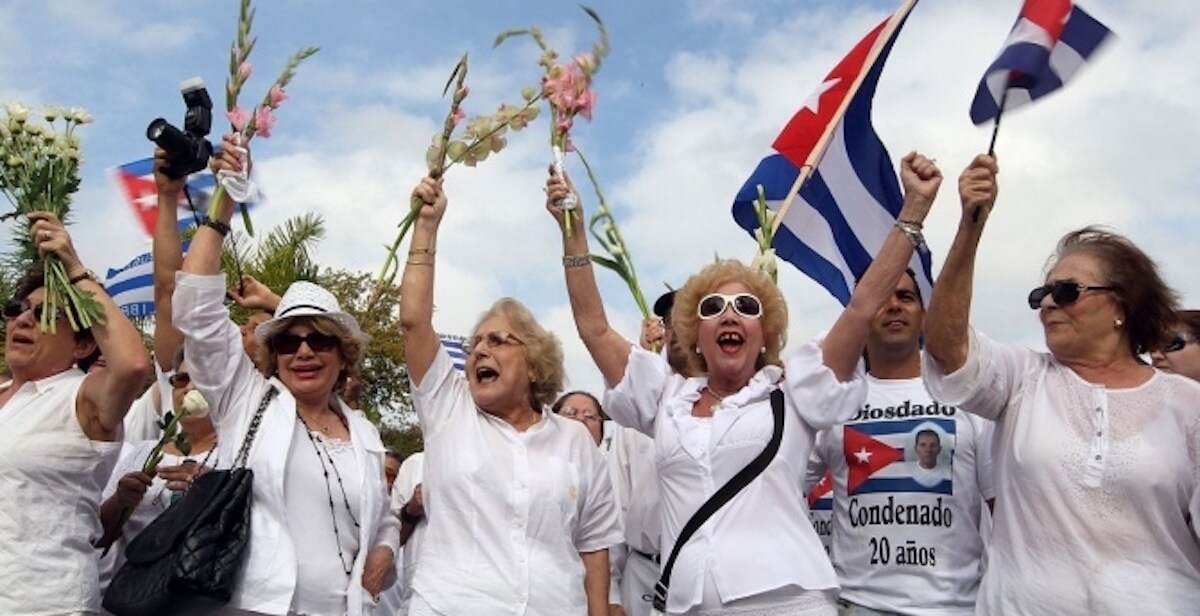
Credit: Atlas Network
White & Red
Belarus
Since fraudulent elections in August, Belarusians have taken to the streets calling for the resignation of longtime leader Alexander Lukashenko. In addition to demanding free and fair elections and the release of political prisoners, protesters demonstrated against police violence and media freedom restrictions, which are only part of many human rights violations perpetrated under Lukashenko’s 26 years of rule. His mishandling of the ongoing COVID-19 pandemic further exacerbated the discontent amongst the population, and the sporadic uprisings quickly turned into weekly mass rallies throughout the country.
White and red are the colors that have come to define the protest movement in Belarus. The colors are based on the flag of the Belarusian opposition, a red stripe on a white background. The flag was the original symbol of the Belarusian Democratic Republic in 1918 before the country was annexed by the Soviet Union. After the fall of the Soviet Union in 1991, the white-red-white flag was made official once again, until Lukashenko changed it in 1995 to suppress Belarusian nationalist symbols he associated with dissent. Today the flag is the symbol of the democratic Belarusian opposition, and protesters have adopted red and white as their signature colors.
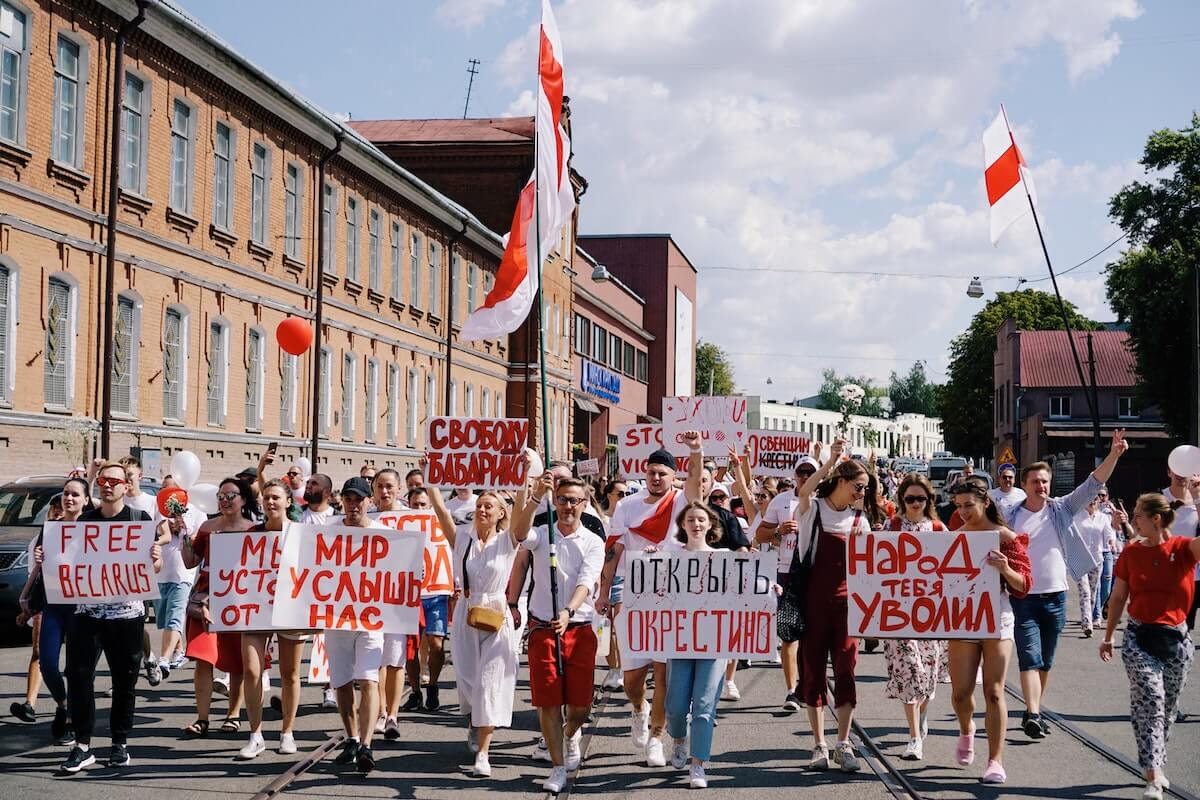
Credit: Artem Podrez
Though the flag is not officially illegal in Belarus, the authorities have treated it as a sign of protest, and will arrest anyone displaying the flag, wearing insignia, or have even bulldozed snowmen with red scarves. Red and white balloons, flowers, and ribbons became prominent at anti-government rallies. Residents in Minsk also hung red-and-white laundry from their balconies, while a woman traded the traditional wedding gown for a dress matching the colors of the protests.
Because authorities send policemen with ladder trucks to take down white-red-white flags from private balconies: pic.twitter.com/GdQZmxj3Iv
— Valzhyna Mort (@ValzhynaMort) September 5, 2020
Despite the best efforts of the regime, protesters draped in white-red-white flags continue to demonstrate every week, and solidarity rallies around the world proudly display the white-red-white flag of democratic Belarus. Though the dictatorship of Alexander Lukashenko lives on, most democratic countries recognize Sviatlana Tsikhanouskaya as the rightful leader of Belarus, and the white-red-white flag as the true symbol of Belarus. The democratic movement has turned white and red into the symbols of democratic Belarus.
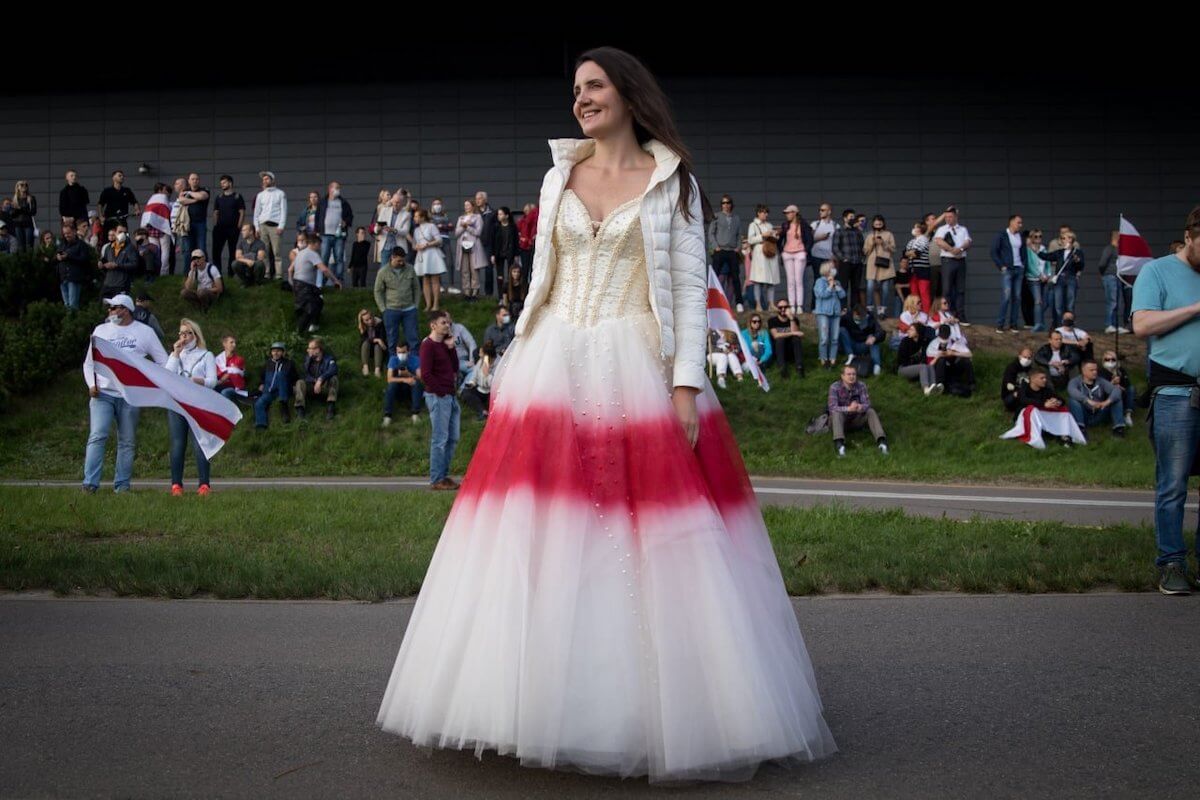
Credit: Belsat TV
White & Light Blue
Light blue is the color of the sky, most commonly represents peace, and is considered a non-threatening color that conveys feelings of calmness and serenity. Blue has been used historically as a symbol of piety, and is significant in Islam. White and blue are also the colors of the banned East Turkestan flag, most popularly used as a symbol of the Uyghur independence movement and demands for justice.
Global protests in support of Uyghurs
The Chinese Communist Party (CCP)’s mass internment program has arbitrarily detained at least 1 million Uyghurs, Kazakhs, and other ethnic minorities in concentration camps, where detainees are subjected to political indoctrination, forced labor, sexual abuse, torture, and even forced sterilization. Within these camps, they are forced to renounce their culture and religion.
Outside of the camps, the dystopian surveillance state monitors every individual, and uses facial recognition technology to impose consequences for citizens’ behavior and “extremist” acts — which include displays of religious and cultural affiliation such as growing a beard, wearing a headscarf, or possessing items with the crescent moon and star. The crescent moon is a symbol of Islam, and together with a star, they symbolize the banned Uyghur flag.
The long arm of the CCP extends beyond its borders. China’s digital authoritarianism allows government officials to reach the Uyghur diaspora community and prolong the suffering of the overseas Uyghurs by threatening and intimidating their families still living inside China. Many Uyghur activists have seen their family members targeted to suppress their activism abroad.
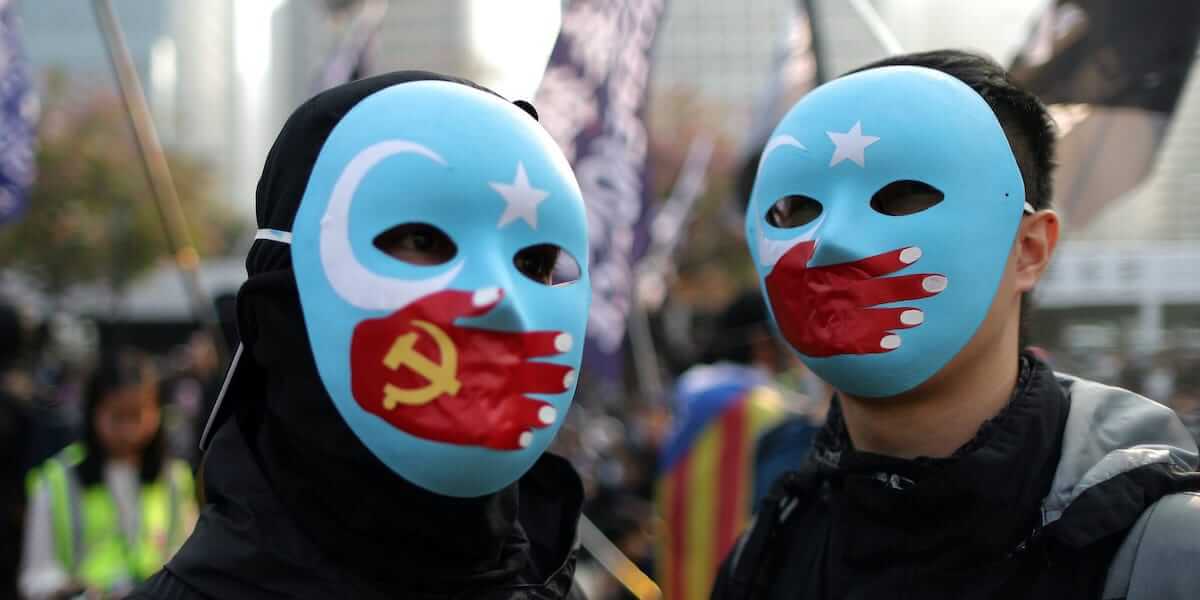
Credit: Lucy Nicholson/Reuters
To protect their families by remaining anonymous at protests, overseas Uyghur demonstrators wear blue masks — with CCP’s red hand painted across the mouth area — and sport t-shirts and headbands emblazoned with symbols of the Uyghur national identity while protesting outside Chinese embassies in Istanbul, Brussels, Jakarta, Hong Kong, and many other cities. Owed in part to protesters’ efforts, last month, the U.S government formally declared and recognized that China’s actions amounted to genocide.
The Uyghur diaspora is resolute, and protests around the world continue to call on the international community to break their silence and stand up against China’s authoritarian attempts to curb freedom of expression, right to information, association, and religion.
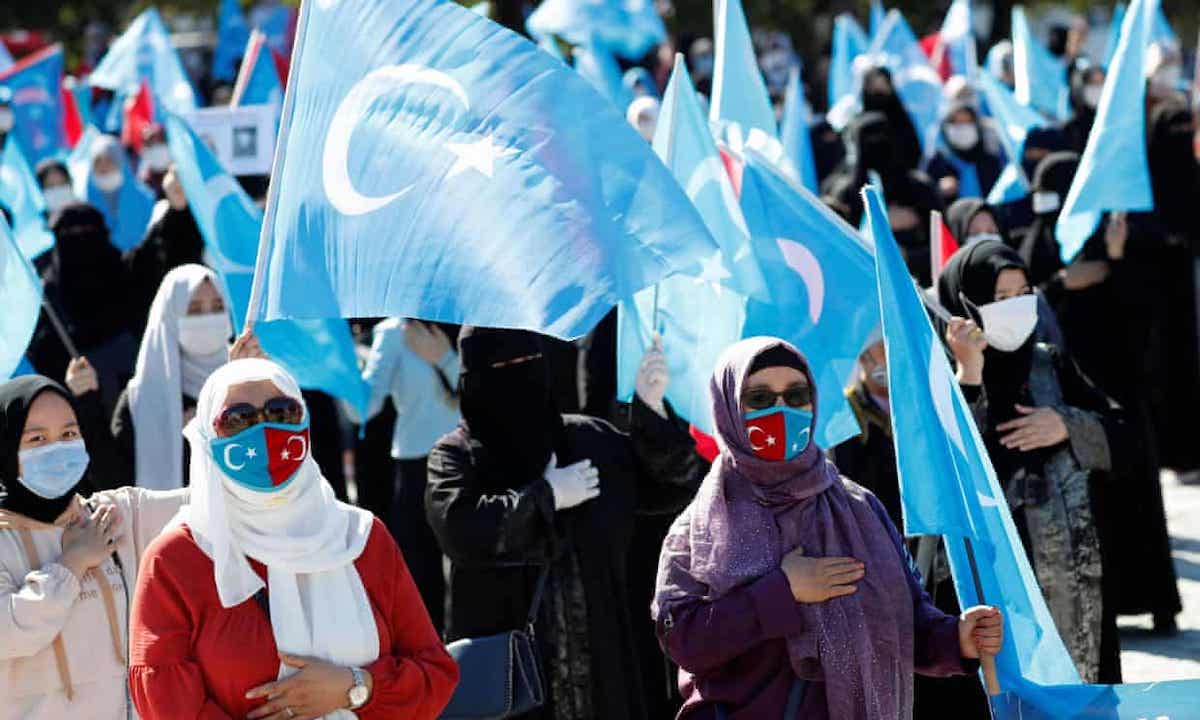
Credit: Murad Sezer/Reuters
Yellow
Yellow is the most luminous color of the spectrum and is generally associated with joy, positivity and hope and is said to encourage creativity and communication. According to color psychology, use of yellow is effective in producing mutual collaboration.
Malaysia
In August 2015, protesters wearing yellow T-shirts, chanting “Power to the People” and “Najib Resign,” flooded the streets of Malaysia’s major cities. The color yellow had been associated with Bersih — a coalition of civil society groups that advocate for free and fair elections — in consequence of a successful branding strategy that made yellow the symbol of the national movement for reforms in governance. The group is responsible for massive pro-democracy demonstrations against the Barisan Nasional coalition which, up until Malaysia’s most recent election, ruled over Malaysia since its independence in 1957.

Credit: Athit Perawongmetha/Reuters
The 2015 protests were held to call for Prime Minister Najib Razak’s resignation due to corruption allegations. Earlier that year, against the backdrop of a plummeting economy, the 1Malaysia Development Berhad (1MDB) fund scandal, first reported by Clare Rewcastle Brown from the Sarawak Report, garnered global attention. Razak embezzled 700 million USD in his private account from structures related to the state investment fund 1MDB.
Days after the anti-corruption protests were announced, the government shut down access to all websites organizing the rally, banned entry to the capital’s Independence Square, and declined Bersih’s protest permit request. They also threatened to use military force and to put the sedition act into application, an overcompassing legal tool to silence human rights defenders and political activists.
As the Bersih movement gained traction, the Malaysian government outlawed yellow attire and printed material with the rally logo altogether. In response, Bersih invited the Malaysian people to disregard the ban and continue using the color yellow to articulate their demands for free and fair elections, government transparency and accountability, as well as the protection of Malaysia’s parliamentary democracy.
After years of calling for Razak’s resignation, the Malaysian Anti-Corruption Commission finally arrested Najib Razak in July 2018. He was then sentenced by the High Court to 12 years in prison for corruption.
To this day, yellow has remained the emblematic color of Bersih and its protest movement, bringing a visual continuity to more than a decade of activism.
Black & Yellow
Black has cultural connotations varying from darkness, evil and mourning, to sophistication and elegance, to power. In the context of protests it has been used to portray feelings of sorrow, anger, defiance and independence, as well as a tactic to anonymize protesters for their safety.
Hong Kong
The color yellow played a role in Hong Kong’s pro-democracy movement as early as the 2014 Umbrella Movement, when thousands took to the streets for 79 days. The protest called on the Chinese Communist Party (CCP) to grant Hong Kong its autonomy and guaranteed freedoms under the “one country, two systems” framework. Protesters adorned trees, street poles, outfits, and even their wrists with yellow ribbons to signify their support for the city’s burgeoning pro-democracy movement.
Following the 2014 Umbrella Movement, the Chinese government continued to tighten its grip on Hong Kong. In June 2019, Hongkongers once again took to the streets to voice their strong opposition to an extradition legislation that would allow for the arbitrary transfer of both Hong Kong citizens and foreigners to mainland China, where judicial independence is lacking, to be tried. The color yellow played a prominent role in signaling the pro-democracy leanings of protesters and businesses. Protesters often carried yellow umbrellas or donned yellow helmets — both of these items also protected them against tear gas, water cannons, and rubber bullets brutally deployed by the Hong Kong Police Force — and wore black clothing. International media platforms referred to the protesters’ consistent black and yellow sartorial choices as “Hong Kong’s protest uniform.” According to an interview published in Business of Fashion, protesters wore the color black “to communicate their sorrow, anger and regret” in response to the Hong Kong government’s behavior and police brutality. In autumn of 2019, it was reported that China has decided to ban all exports of black clothing to Hong Kong.

Credit: Lam Yik Fei/The New York Times
In the months following the mass demonstrations of 2019, several local Hong Kong residents, businesses, and shop owners organically spearheaded a “yellow circle economy” as a means to indicate which establishments were pro-democracy. Consumers and residents that shared the same democratic values frequented stores that were “yellow,” which provided them a safe space to openly organize, express themselves, and discuss politics and current events. Businesses that were labelled blue meant that they were supportive of the Hong Kong Police Force or were sympathizers of the CCP.
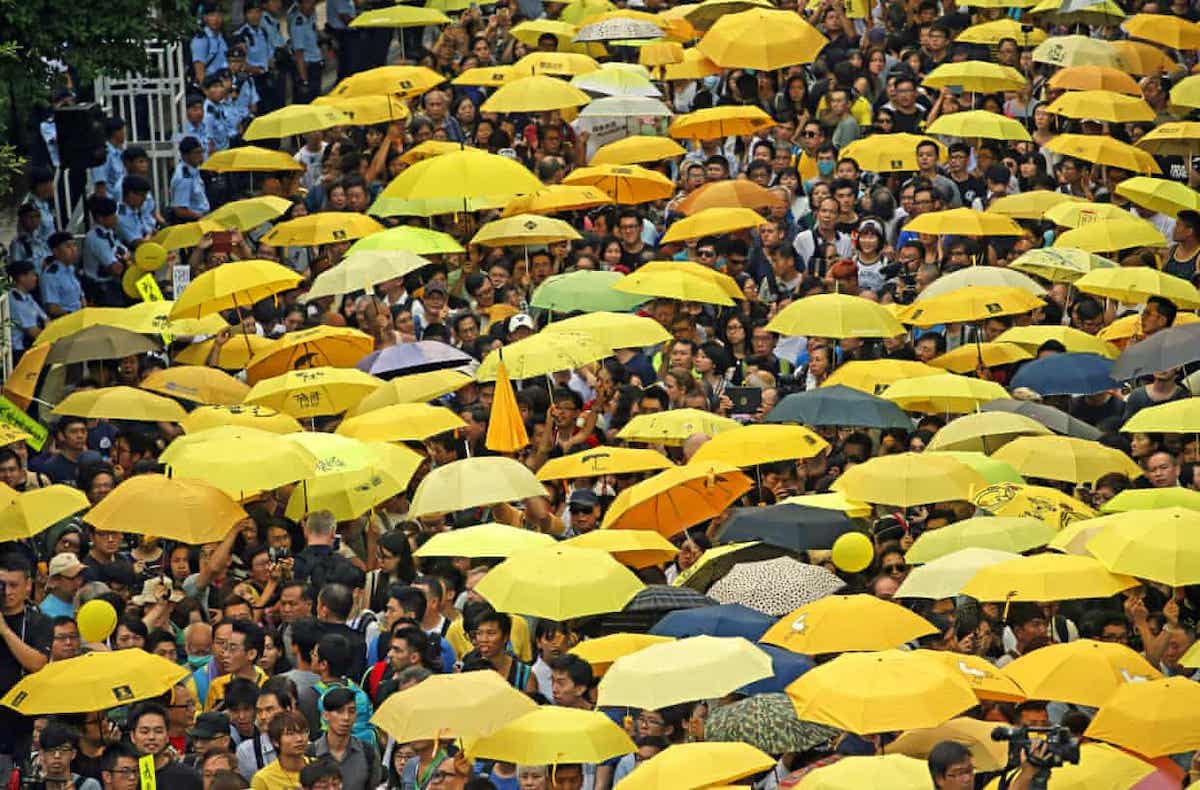
Credit: Kin Cheung/AP
In July 2020, the Chinese government unilaterally imposed a draconian national security law in Hong Kong. Ever since the promulgation of the law, civil liberties and fundamental freedoms have severely regressed due to fears and threats of harsh punishments — including life imprisonment — for vaguely defined acts of “secession, subversion, terrorism, and collusion.” Although the space for civil society to openly organize and dissent has decreased dramatically, the colors yellow and black remain symbolic in Hong Kong’s political awakening.
Similar to how New York Fashion Week showcases the latest styles in the fashion industry, street protests showcase the latest trends in the global struggle against authoritarianism. Pro-democracy movements around the world have incorporated colors, clothing, and fashion to highlight their desire for fundamental rights and amplify their clarion calls for change. From Cuba to Iran, Hong Kong to Burma, Belarus to Uganda, and Malaysia, fashion has proven itself to be an effective vehicle of activism. Creative expression empowers people to become catalysts for change by creating a vessel through which their voices can be heard. Color, specifically, activates individuals by conveying a message and helps the disparate crowd articulate their common cause in favor of social change.